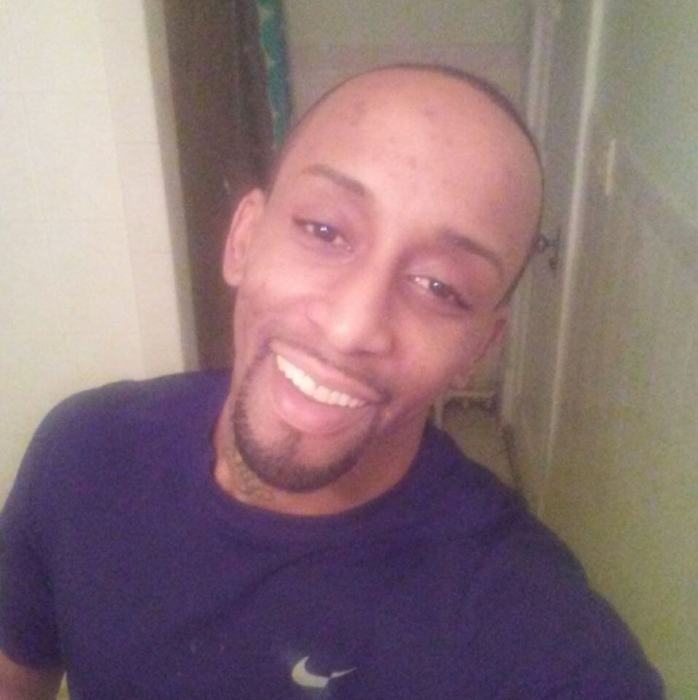With major testimony ended in the retrial of Davawn Robinson, the accused killer of Edgard Mercado, the defense and prosecution have presented a Manhattan jury with two very different stories of Mercado’s death.
“I started to do some of the things he told me,” Robinson said on the witness stand on June 21. “As I masturbated him, I’m still talking dirty in his ear.”
Robinson, who is charged with a single second-degree murder count, said he met Mercado, 39, in the West Village in September of 2009. The 25-year-old gay man purchased cocaine for the two of them, using the older man’s money. They had a drink at a Christopher Street bar and then traveled by cab to Mercado’s East Village apartment. Once there, Robinson said, they drank wine and used the cocaine. Mercado asked him to engage in erotic asphyxiation as part of their sexual encounter. Mercado showed Robinson how to tie his hands and then how to wrap a rope around his neck, the defendant said.
“It was kind of fun,” Robinson said. “I felt like it was kind of interesting.”
With Mercado seated in a chair with his hands bound in front of him and held against his chest and chin, Robinson said, he held the rope at Mercado’s neck with his left hand while using his right hand to alternately masturbate himself or Mercado and to fondle Mercado’s chest. This went on for “several minutes,” Robinson said.
“As I let go of the rope he slumped over to the side,” Robinson said. “After looking at his face I realized he might be dead… I started to freak out, I just panicked.”
Using his cell phone, Robinson called 911 and hung up. He called again a minute later and spent 22 minutes telling the 911 operator that he had just killed a man in self-defense. He eventually gave the operator Mercado’s address. He left the fourth floor apartment by jumping from a window to the fire escape and took Mercado’s computer and cell phone with him. Neither item was recovered. Robinson said he discarded the phone and left the computer in a cab.
Police traced Robinson to his New Jersey home the next day. He voluntarily returned with them to Manhattan. Robinson continued to claim that he acted in self-defense in written, oral, and videotaped statements. It was at his first trial last year, which ended in a mistrial, that he claimed the death was an accident during sex.
Police found no bondage pornography or equipment in Mercado’s apartment. The rope was part of a uniform that Mercado wore during a Brazilian dance class.
The prosecution charged that Mercado’s death came during a struggle. Its main witness, Dr. Jason Graham, a deputy chief medical examiner in the city’s Office of Chief Medical Examiner (OCME), testified that Mercado had a small bruise on each hand, multiple hemorrhages in the soft tissue of his neck, small hemorrhages called petechiae in his eyes and on his face, fractures of his voice box as well as his neck’s hyoid bone, ligature abrasions and bruising that encircled his neck, and bruising and scrapes on his face.
“I would not expect to see these injuries in someone who is engaging in consensual sexual practice,” Graham said on June 18. The next day, he testified, “Taken together, this indicates a great deal of motion and I think would be highly consistent with a struggle.”
Graham’s direct and cross-examination began on June 18 and ended the next day. He said that Mercado’s death probably took “several minutes” and that the fractures could not have happened easily.
“It would take a significant amount of force to break the hyoid bone,” he said on June 18.
Graham said that the absence of scrapes around Mercado’s wrists showed his hands were bound after his death, testimony important to evaluating how the strangulation happened. In Robinson’s story, the two ends of the rope were around Mercado’s wrists, so he could not pull on them. If Graham is correct, Robinson could have used the ends to apply greater force.
An emergency medical technician who responded to the 911 call testified that the rope was so tight around Mercado’s neck that she could not get her finger between it and his skin.
Dr. Rachel A. Lange, an OCME forensic pathologist, testified at the first trial that Mercado was alive when his hands were bound, which would lend support to Robinson’s story. The disagreement between the two pathologists was a central issue for the defense, which used the it to cast doubt on Graham’s testimony during cross-examination.
The prosecution asked that Graham testify instead of Lange in the second trial.
The trials have drawn a great deal of attention from the Legal Aid Society, which is defending Robinson, and the Manhattan district attorney’s office. Both sides have had other lawyers in the courtroom observing and taking notes, then consulting with their colleagues during breaks.
A final defense witness and closing arguments are expected on June 25. As with the first trial, the jury will first weigh second-degree murder, which alleges that Robinson intended to kill Mercado and has a maximum sentence of 25-years-to-life.
If Robinson is acquitted on the top count, jurors will consider second-degree manslaughter, which has a maximum sentence of 15 years in prison, and then criminally negligent homicide, which carries a maximum sentence of four years in prison. A defendant who is convicted of either of the two lesser charges would be eligible for release after serving six-sevenths of the sentence.


































